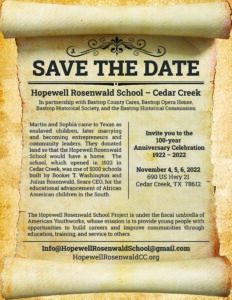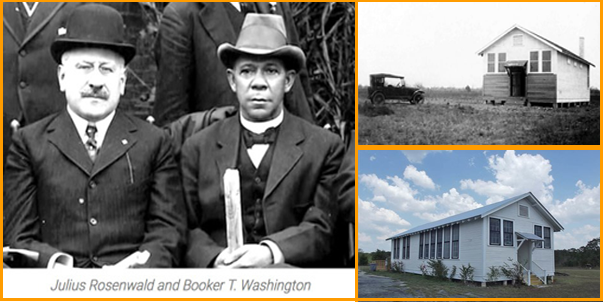Julius Rosenwald – Timeline
Julius Rosenwald, who was born in 1862 while Abraham Lincoln was president, in a house just one block from Lincoln’s own home in Springfield, Illinois, eventually played his own towering part in reinforcing the unity of America, elevating its black citizenry, and moving the nation closer to fulfilling the promises of its founding.
A child of German immigrants, Rosenwald dropped out of high school after two years to apprentice with his uncles, who were major clothing manufacturers in New York City. By his 30th birthday he had achieved moderate success running his own business that made ready-to-wear men’s suits. Then came his big break.
Richard Sears, a gifted advertising writer but chronically disorganized entrepreneur, had a tiger by the tail as he struggled to fill mail orders at his booming new company Sears, Roebuck. Julius got a chance to buy a quarter of the company, and soon he was imposing order on the shipping-room chaos.
Sears was the Amazon.com of its day, and Rosenwald had to take extraordinary measures to keep up with its growth. He put 7,000 laborers to work day and night building a huge warehouse. Special machines were made that could open letters at the rate of 27,000 per hour. A system of conveyor belts, pneumatic tubes, and color-coded tags shunted merchandise through the vast new plant. Henry Ford reportedly visited and absorbed ideas for his future assembly line.
Management expert Peter Drucker later characterized Rosenwald as “the father . . . of the distribution revolution which has changed the world economy in the twentieth century and which is so vital a factor in economic growth.”
1862
Julius Rosenwald was born August 12, in Springfield, Illinois. He lived just a block away from Abraham Lincoln.
1879-1885
After moderate success in the clothing business in New York City
1885–95
After moderate success in the clothing business in Chicago
Rosenwald bought a one-fourth interest in Sears, Roebuck and Co., which became the world’s largest mail-order house and chain of retail stores.
1906
Rosenwald friend and senior partner at Goldman Sachs, Paul Sachs, brought Sears, Roebuck public
1910
Rosenwald receives a copy of J.G. Brooks’ An American Citizen, from Sachs. The book, a biography of William Baldwin, (the philanthropist and advocate for black education), along with a copy of Booker T. Washington’s Up From Slavery. The experience of reading these books profoundly altered Rosenwald’s view of race in America as well as his ideas about how philanthropy could achieve its goals.
Rosenwald succeeds Richard Warren Sears as president of Sears, Roebuck and Co.
1910, Summer – Rosenwald read the autobiography of Booker T. Washington.
1911 – Met and befriended Washington, building a strong relationship that included visiting each other at their homes. Rosenwald later introduced Washington to Chicago’s business leaders, describing him as “helping his own race to attain the high art of self-help and self-dependence” while simultaneously “helping the white race to learn that opportunity and obligation go hand-in-hand, and that there is no enduring superiority save that which comes as the result of serving.”
1912
Rosenwald announced that in celebration of his 50th birthday, he would be giving away close to $700,000 (about $16million in current dollars), encouraging other wealthy individuals to support good causes of their own. “Give While You Live,” was his slogan, making a dramatic entry into large-scale philanthropy.
One of Rosenwald’s birthday gifts was $25,000 to Washington’s Tuskegee Institute. Washington shrewdly set aside part of it to launch a new experiment which he expected might interest his donor—a $2,100 effort to build new schools in parts of Alabama where little or no education was being offered to rural blacks. Washington documented progress on the schools with photos and careful accounting, including descriptions of the community enthusiasm the erection of the new schools created among locals of all races. Pride in the fresh facilities often overflowed into newly painted houses, improved roads, and expanded cooperation among residents.
Rosenwald was captivated. Only 5 percent of slaves had been literate. And during the Jim Crow era, educational offerings to African Americans (and many residents of the rural South in general) were miserably inadequate. Soon Rosenwald and Washington were ramping up their program, eventually building “Rosenwald Schools” all across the South over more than 20 years. There were correlated efforts to train teachers to serve in the new schools, and funds to provide libraries and workshops for students. These facilities would never have materialized absent this aggressive philanthropy, and they had both immediate and deeply enduring effects.
1917
Named to John D. Rockefeller’s General Education Board
Rosenwald established the Julius Rosenwald Fund (to be expended within 25 years after his death and liquidated in 1948), the chief purpose of which was the improvement of education for blacks. Augmented by local taxes and private gifts, the fund paid for the construction of more than 5,000 schools in 15 southern states.
Established the Sears, Roebuck Foundation (the first corporate foundation in America) to fund his philanthropic interests.
1924
Rosenwald retires from Sears, Roebuck, dedicating the remaining years of his life to advancing the causes he had spent his life supporting.
1925
Rosenwald named chairman of the Sears board of directors. Along with A.H. Loeb, treasurer of the company, they established an exemplary savings and profit-sharing program for employees. Under Rosenwald’s leadership, Sears began to manufacture its own merchandise and instituted the policy of guaranteeing full refunds to dissatisfied customers.
Generous to Jewish charities, Rosenwald nonetheless opposed Zionism. From the early 1900s he was concerned with the welfare of U.S. blacks.
1929
Rosenwald established the Museum of Science and Industry in Chicago, contributed heavily to the University of Chicago, and founded dental infirmaries in the public schools.
1932
Rosenwald died January 6, in Chicago


